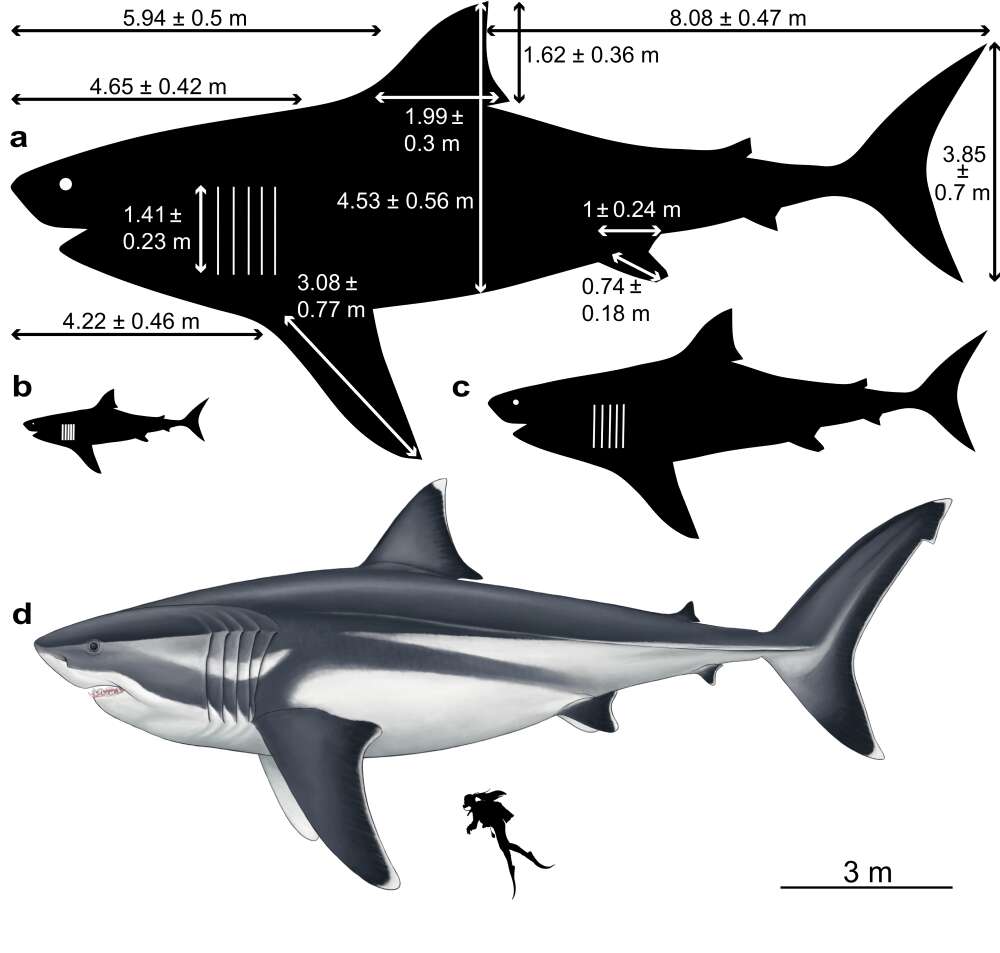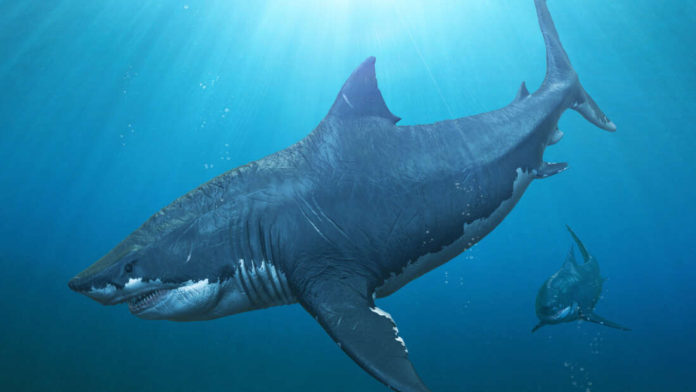Megalodon ruled the seas millions of years ago, and today, most of what we have to go on in determining their size are the giant teeth we sometimes find when we’re along a beach or scuba diving our Lowcountry waters. But now, scientists establish the true size of ancient megalodons.
When looking at ancient animals’ size scientists typically only have fossil evidence to work from. Teeth that are millions of years old, left behind in coastal sediments that were first discovered in 1843.
However, a recent study published in the journal Scientific Reports believes it’s determined the true size of the mighty megalodon, which they predict was 16 meters (52 feet) long with fins the size of an adult human.
Otodus megalodon was one of the ocean’s most voracious predators when it lived from 23 to around 3 million years ago. Its serrated teeth tell us that it fed on meat, most likely the flesh of whales, large fish, and other sharks.
Being so enormous means their necessary calorie intake was quite high, making large prey a necessity part of their diet. There has even been fossil evidence of megalodon teeth still lodged in the bones of ancient whales, likely having snapped off during an attack.

Guessing the diet of an animal from the shape of its teeth is one thing, but imagining an animal’s complete body size from their dentition alone is no easy thing.
For decades, it’s been estimated that they reached a length of anywhere from 35 to 60 feet.
To come to their estimations, a team from Swansea University and the University of Bristol in the UK used mathematical models to narrow down the proportions of the megalodon. They were able to compare its body size to that of five shark species living today that share physiological characteristics and work out its size during different periods of its life.
“Megalodon is not a direct ancestor of the Great White but is equally related to other macropredatory sharks such as the Makos, Salmon shark and Porbeagle shark, as well as the Great white,” said shark expert Dr Catalina Pimiento in a statement. “We pooled detailed measurements of all five to make predictions about Megalodon.”

Scientists looked at changes in the extant species’ proportions as they aged to get an idea of how megalodon’s size might change throughout its life in a similar way to how humans grow from babies to children and eventually settle in their adult form.
They were relieved however to discover that these modern species exhibit a simple growth pattern, maintaining their composition throughout their lives. This meant they could essentially scale up the growth curve of the modern sharks to predict the size of the megalodon, landing at an adult length of around 16 meters, which comes in at just over 52 feet long.
These enormous sharks were more than two or three times the size of modern great whites. Their huge heads were around 4.6 meters (15 feet) in length and clocked a bite force of more than 10 tons, a harrowing thought in the context that today’s great white’s clock a measly 2-ton bite force.
In piecing together the life and size of this ancient ocean giant it’s hoped scientists can better understand why it went extinct, potentially contributing towards the survival of today’s threatened marine species.
That’s one large predator. And, we thought great whites were awesome?










